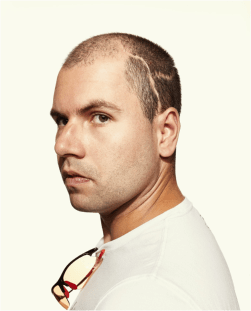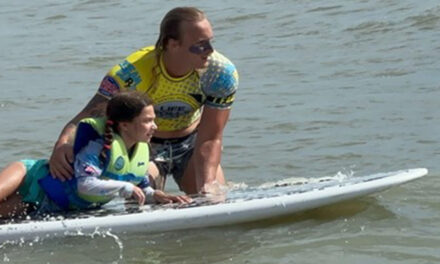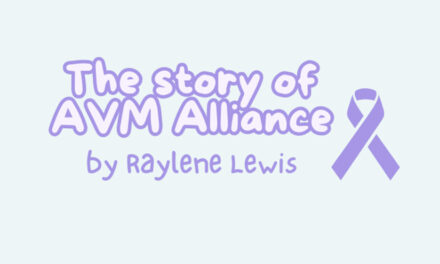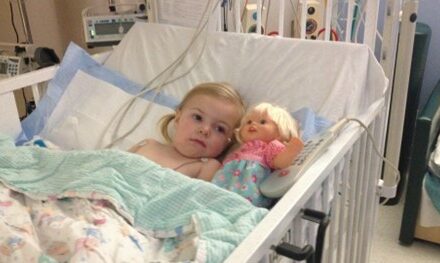My name is Tommy Quick. I am 30 years old. I celebrated my 30th birthday on the 2nd of August at the tip of Cape York Peninsula, far North Queensland Australia.
I was born in Melbourne, an ordinary boy from an ordinary family in an ordinary suburb of Melbourne. My life, though, has been anything but ordinary. As a kid I played sports: cricket, AFL, tennis etc. I was good at school and had reasonable language skills. Part of my schooling was done in the Kimberley region in West Australia. My parents both taught at an indigenous Community School. I had a wonderful time there making lifelong friends and learning a lot about how our first Nations people live. Not an opportunity many people and kids get.
We returned from the Kimberley to Melbourne. On the 6th of April 2006 I woke with a blinding headache. Within 15 minutes, I was unconscious. Within an hour, I was in the ED at the Royal Children’s Hospital. I was in the ICU for 11 days with 3 of those in an induced coma. It took about 6 weeks for me to regain consciousness. When I woke, I couldn’t speak or move my right side. I was terrified. I had suffered a massive stroke caused by an AVM.
This was the beginning of a new life for me. Having to learn to talk, walk and to do things in my life with only my left hand. I’m still not very good at a lot of those things. It was a dreadful time of my young life. I was 12 years old, and had just started with school, beginning the next phase of adolescence. No-one had anticipated this happening. We had never heard of young people having a stroke. I had to have physio, speech therapy, music therapy, but I couldn’t really deal with what happened to me. It was very lonely and isolating, not being able to get my thoughts across. Eventually, I got to see a counsellor and psychologist who was very understanding. She helped me with my communication and how to get my feelings across. My parents really wanted me to see someone as there were issues around my recovery that didn’t sit right with them. They knew me best!! Once I could understand what was going on, it was a tiny bit easier to cope.
Eventually, about 6 months later, I got to go home. So different on a walker or in a wheelchair. Life couldn’t have been any worse. Dad took time off school to be my caregiver. His school community was fantastic. Every Monday for many months someone from the school would leave a food hamper on our doorstep. This meant Mum didn’t need to worry about shopping and cooking as well as spending every day at my bedside and walking beside me even once I was home. She went back to work in her catering business after about 3 months. Her work community was fantastic to her as well. They didn’t charge her rent until she went back full-time about a year later.
We were very lucky to have a great network of family, friends and community who helped from that very first day, April 6th, 2006. This network is still there supporting me and them. Nonetheless, it was and still is a life-changing time for us all.
I muddled and limped along for the next few years until one day I was talked into going on a skiing trip, imagine that!! I had such fun with other kids who had differing disabilities. One of the coordinators talked to me into attending another camp for young people with disabilities. From then on life began to change for me. I had more purpose. I was accepted in my new form, and I met a lot of other kids and parents who lived similar, different and even worse scenarios than I was dealing with.

These camps led me to take on the challenge of the Kokoda Track in Papua New Guinea. By far the hardest but most rewarding thing I had ever done. Sometimes 12-hour days of walking or struggling with a porter on each side guiding and assisting me. Blisters, tears and a great sense of awe and respect as to what our soldiers had endured during World War 2. Again, my parents were behind me in this. Dad, my uncle Tim and his friend Rick along with the wonderful porters were my support crew and encouragement.
My life after Kokoda returned to some sort of normality. I did a Bachelor of Science major in nutrition at university. I needed a lot of help with this, but I finished and got my degree. In my downtime I went to the gym, did physio, had coffee with friends. But I didn’t really have much purpose. I didn’t have a goal. Then I took possession of a recumbent trike. This was organized by my OT Anna. It changed my life forever. It was adapted to suit my hemiplegia and gave me so much freedom and independence. I could ride around our suburb and beyond to do my activities. No longer did I need Mum or Dad or a taxi to go places. It was awesome. From here my community expanded and with it came a new challenge.
One day I pedaled across town to meet a mate for coffee. We both got around to talking about our lives to come. I admitted that my life lacked purpose. He looked at me and looked at the trike and suggested, “Why don’t you ride this around Australia?” From this throw away comment, the Four Points Australia was born.
 3 years later I’ve ridden a trike nearly 9000 km. We started at Steep Point, the most westerly point of Australia and rode across the Nullarbor Plain. We were heading to the most southerly Point Wilsons Promontory in Victoria. But in South Australia catastrophe hit again. I was hit by car and had to be airlifted to the Royal Adelaide Hospital. I had suffered smashed pelvis among other injuries. I spent a month at the hospital learning how to walk again. I was in rehab nearly all of 2022 and it’s still ongoing.
3 years later I’ve ridden a trike nearly 9000 km. We started at Steep Point, the most westerly point of Australia and rode across the Nullarbor Plain. We were heading to the most southerly Point Wilsons Promontory in Victoria. But in South Australia catastrophe hit again. I was hit by car and had to be airlifted to the Royal Adelaide Hospital. I had suffered smashed pelvis among other injuries. I spent a month at the hospital learning how to walk again. I was in rehab nearly all of 2022 and it’s still ongoing.
This was made more difficult because I was hit on my right side, my already weak side. Eventually at the end of ’22, I got back on the trike. A new one, the other was a write off! In early December 2022, we completed the leg to Wilsons Promontory. It was a great experience as I had other people around me to support me and make me feel safe.
In March 2023, this year, we started off for the 3rd Point, Cape Byron and from then on to the fourth and final point, Cape York. One of the hardest things about this ride is the isolation and the solitude. Our community has shrunk to 3, me Mum and Dad. Contact was very difficult due to the remoteness and the distance from towns. I really miss my friends and the support network from home. Plus, of course it’s a long way to ride! Some days I really struggled, some days I flew through it. We have met some amazing people on the way, kind and generous and so supportive. Most of these people now follow me on my socials. I’m grateful to them. Some of these people donated money, some did our washing for us, some bought dinner or paid for fuel. I can’t thank them enough.
So now this journey is nearly over, 800 km to go. I’m hoping that we will have friends and family join us on this last leg which will make it a lot more fun.
I don’t know what my next phase of life will bring. I do want to get involved in advocacy work as well as public speaking. This ride has taught me a lot about myself and others. The rough bits of it are far easier with friends and family helping. Sometimes I needed pushing both literally and metaphorically. The dust and the corrugations were a real challenge. Everyone stayed behind me all the way and we did it! A young stroke Survivor with hemiplegia, eyesight issues and processing difficulties rode 9000 km on a recumbent trike over some of the most difficult terrain in Australia. We have raised at least $110,000 for the Stroke Foundation in Australia. I have spoken to schools and service groups, to people around the campfire and to people in pubs and parks across the country. Hopefully the message about the incidence of young stroke will stay with them. It has been an extraordinary journey and I’ve made friends around this great country. My stroke took me in a direction that I couldn’t have imagined in my wildest dreams…
Apart from alerting people about young stroke, I particularly encourage students to aim for their dreams. Even though they will hit their own corrugations, they will feel better about themselves.
What will be my next challenge? That is unclear but I plan to continue to make contributions to make life better for others, such as my emphasis on social inclusion.
Site: the4points.org
Fundraising page: https://www.fundraise4stroke.org.au/fundraisers/tommyquick
Insta: @4pointsaustralia
FB: The 4 points Australia
YouTube: https://youtube.com/@The4pointsaustralia?si=AvJJqImucGv474Gi
About the Author

Tommy Quick
Stroke Survivor
Graphics: Tommy Quick
Medical Editor: Fiza Laheji, MD
Community Editor: Kathleen Colao, MPH, CCRP





